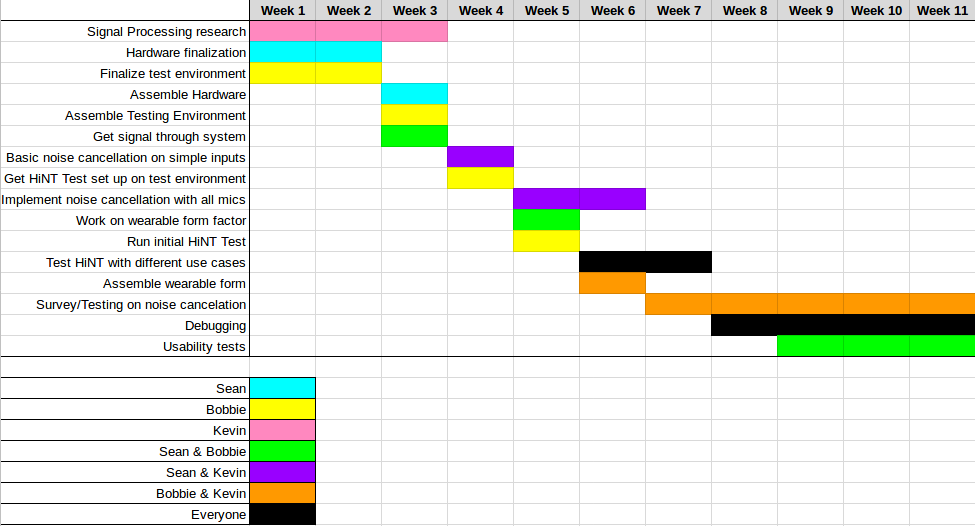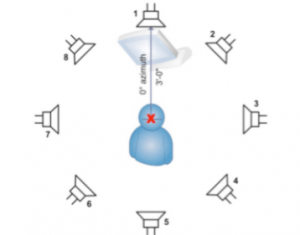This week we made progress on planning the schedule, ordering parts, working on the testing setup, and background research on signal processing.
Schedules
While a lot of the work for our project will be in the signal processing side, we wouldn’t be able to verify that it works without having the required hardware and a way to test that it is working. Therefore, in the beginning of our schedule we are focusing on getting the hardware and testing environment correct.

We are currently on schedule. One potential risk is the TOC early next week, and interviewing season soon after, which could lower the amount of work that we accomplish in the two weeks.
Ordering Parts
We assembled a list of parts needed for hardware and test setup. These represent the minimal working set of materials we need to get started with actually getting input in a controlled test environment. The parts include the Teensy microcontroller board as well as audio jacks for I/O, speakers and power supply for the test environment, and a torso mannequin to mount the mic array to.
Testing Setup
We intend to administer the Hearing In Noise Test (HINT) using a circle of speakers to express the directionality.

Over the course of this week, we contacted institutions which administer the HINT. Some offered stereo recordings for administration with headphones, but unfortunately that would not be helpful for our test setup; many did not respond.

Because of this, we are planning to generate our own 7.1 sound recordings using Audacity and FFmpeg. This week we created an example of a HINT recording. However, the HINT test is an adaptive test, where signal-to-noise ratio is dynamically adjusted based on the test subject’s responses. Therefore, we are also looking into ways to automate the generation of many HINT recordings with varying signal-to-noise ratios.
Signal Processing Research
We also continued research into signal processing algorithms, mostly in adaptive nulling. We found that it has been tried in the context of hearing aids unsuccessfully, at least in part because the space constraints of traditional hearing aids were too limiting.
Planned Deliverables This Week
- Order all parts which we have decided on
- Generate more test environment recordings and automate the process
- (If parts arrive) begin assembling the hardware and test environment
- Meet with Professor Sullivan regarding I/O concerns for signal processing
- Settle on a prototype signal processing block diagram for an adaptive nulling process
